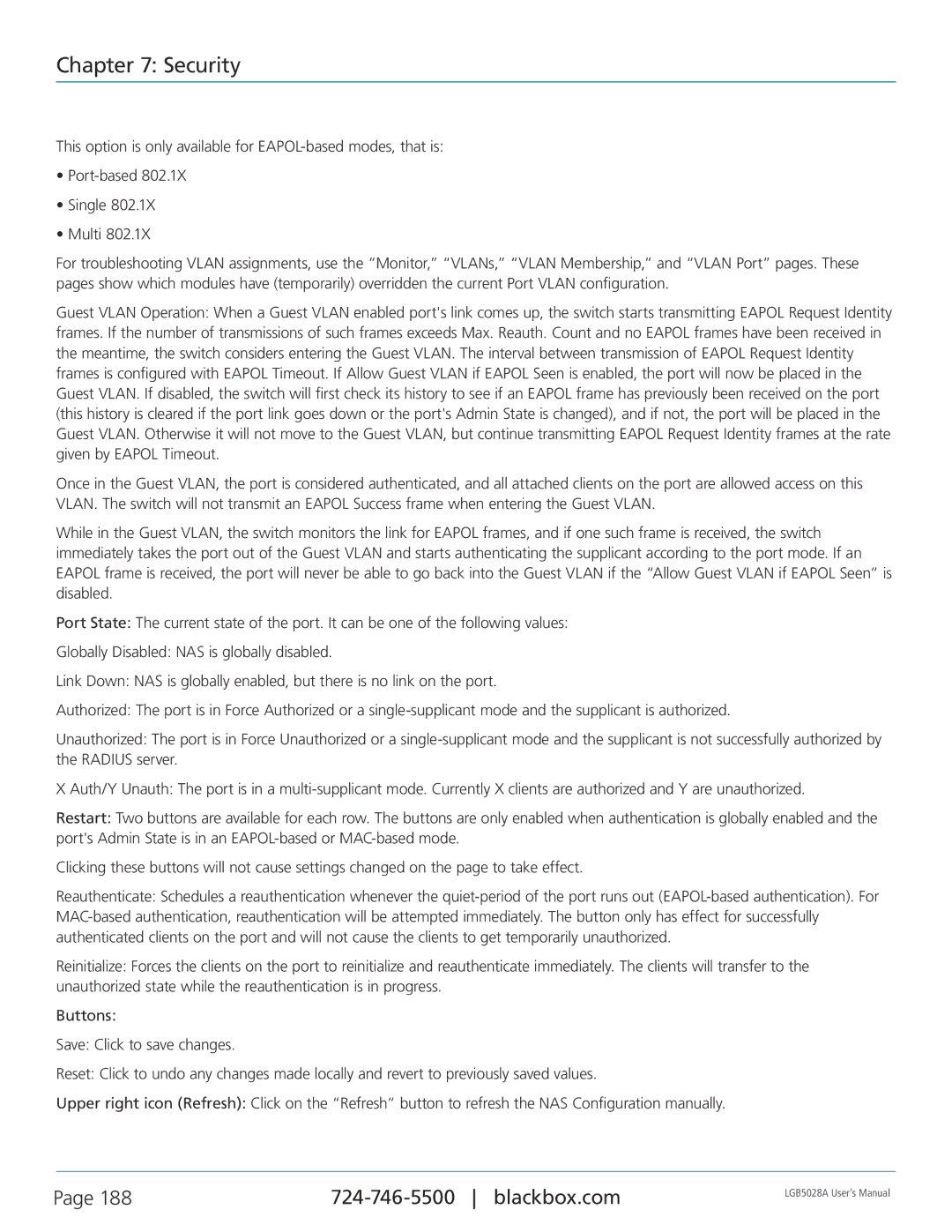
Chapter 7: Security
This option is only available for
•
•Single 802.1X
•Multi 802.1X
For troubleshooting VLAN assignments, use the “Monitor,” “VLANs,” “VLAN Membership,” and “VLAN Port” pages. These pages show which modules have (temporarily) overridden the current Port VLAN configuration.
Guest VLAN Operation: When a Guest VLAN enabled port's link comes up, the switch starts transmitting EAPOL Request Identity frames. If the number of transmissions of such frames exceeds Max. Reauth. Count and no EAPOL frames have been received in the meantime, the switch considers entering the Guest VLAN. The interval between transmission of EAPOL Request Identity frames is configured with EAPOL Timeout. If Allow Guest VLAN if EAPOL Seen is enabled, the port will now be placed in the Guest VLAN. If disabled, the switch will first check its history to see if an EAPOL frame has previously been received on the port (this history is cleared if the port link goes down or the port's Admin State is changed), and if not, the port will be placed in the Guest VLAN. Otherwise it will not move to the Guest VLAN, but continue transmitting EAPOL Request Identity frames at the rate given by EAPOL Timeout.
Once in the Guest VLAN, the port is considered authenticated, and all attached clients on the port are allowed access on this VLAN. The switch will not transmit an EAPOL Success frame when entering the Guest VLAN.
While in the Guest VLAN, the switch monitors the link for EAPOL frames, and if one such frame is received, the switch immediately takes the port out of the Guest VLAN and starts authenticating the supplicant according to the port mode. If an EAPOL frame is received, the port will never be able to go back into the Guest VLAN if the “Allow Guest VLAN if EAPOL Seen” is disabled.
Port State: The current state of the port. It can be one of the following values:
Globally Disabled: NAS is globally disabled.
Link Down: NAS is globally enabled, but there is no link on the port.
Authorized: The port is in Force Authorized or a
Unauthorized: The port is in Force Unauthorized or a
X Auth/Y Unauth: The port is in a
Restart: Two buttons are available for each row. The buttons are only enabled when authentication is globally enabled and the port's Admin State is in an
Clicking these buttons will not cause settings changed on the page to take effect.
Reauthenticate: Schedules a reauthentication whenever the
Reinitialize: Forces the clients on the port to reinitialize and reauthenticate immediately. The clients will transfer to the unauthorized state while the reauthentication is in progress.
Buttons:
Save: Click to save changes.
Reset: Click to undo any changes made locally and revert to previously saved values.
Upper right icon (Refresh): Click on the “Refresh” button to refresh the NAS Configuration manually.
Page 188 | LGB5028A User‘s Manual | |
|
|
